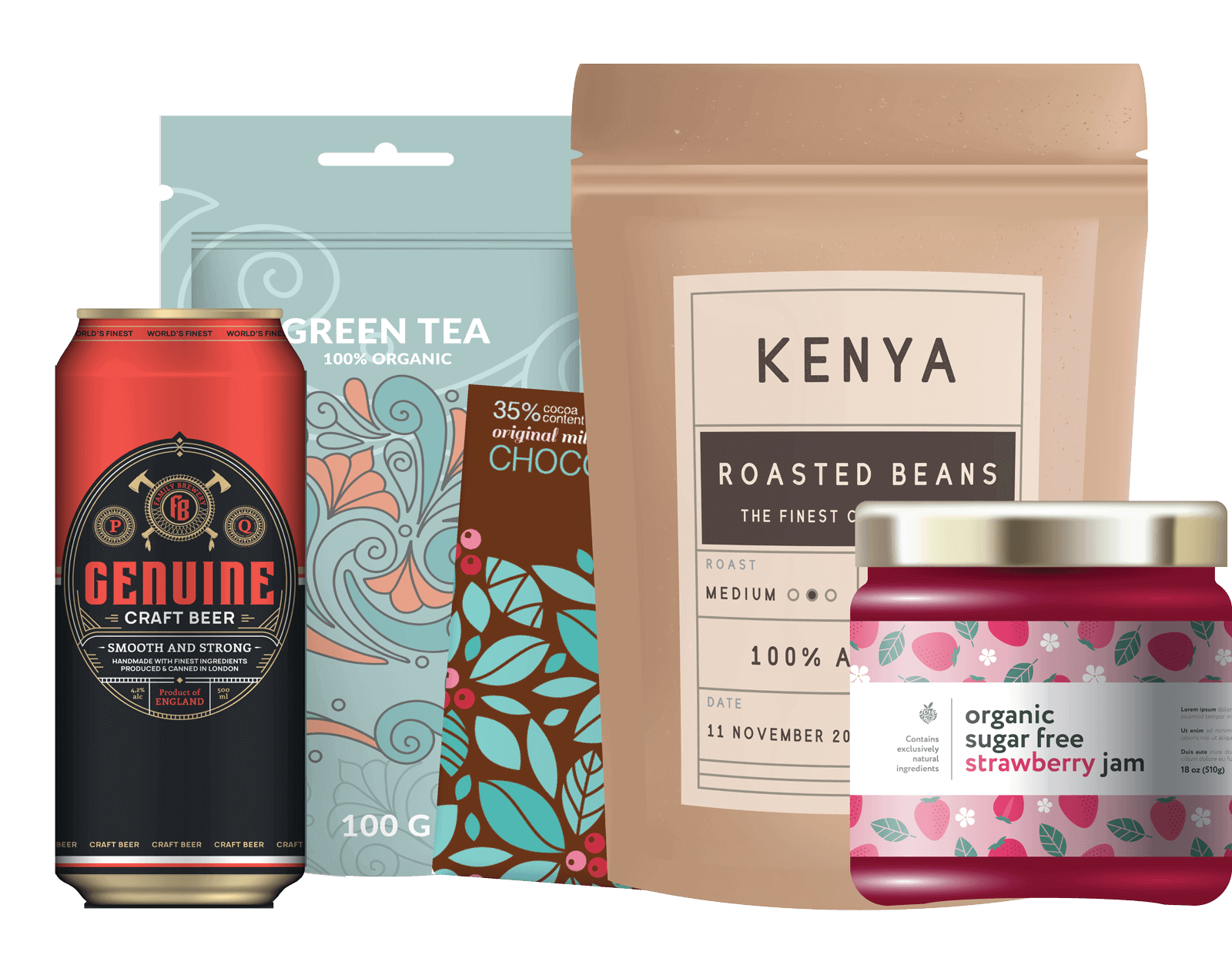As many of you already know, Polyethylene Terephthalate, or PET, is a popular resin used in packaging. So, why are we dedicating an entire blog to it? By diving deeper into PET and exploring its benefits a little more, you’ll become even more informed on the best types of packaging for your products. Offering the best and creating the best value brings you a step ahead of the competition and will truly make you stand out to your customers.
What is PET?
PET is a synthetic resin produced by the polymerization of ethylene glycol and terephthalic acid. PET is spun into fibers for permanent press fabrics, blow-molded into disposable beverage bottles, and even extruded into photographic film. It’s used in polyester fibers for clothing, containers for liquids and foods, and thermoforming for manufacturing, to name a few.
PET is a good barrier for both water and gas, offering resistance to mineral oils, solvents and acids. The only exception is that PET does not offer resistance to bases.
PET is Recyclable
As a raw material, PET is recognized around the world as a strong, safe, non-toxic, lightweight, and flexible material that’s 100% recyclable. In fact, it’s the most widely recycled plastic in the world!
Each PET container is clearly marked with the recycle No. 1 code, so consumers are immediately informed of its recyclability.

It’s also very important to note that another type of container, PETG, has also been putting a No. 1 code on their products. While it may not seem like a huge difference, containers made with PETG have a glycol addition. When PETG products are recycled, they flake and end up clumping onto PET flakes, which disrupts processes and equipment. Recently, California passed a new law that defines exactly what constitutes as PET vs PETG so that the distinct differences between the two materials are understood.
Easily Recognized
PET is also easily recognized by consumers as the material that’s used to make many household and food products. When’s the last time you drank from a water bottle, used ketchup for those delicious French fries at lunch, or used detergent to wash your dishes? Odds are good that the packaging was made using PET.

7 Key Advantages of PET
Many industries can benefit from the advantages of PET including food and beverage products, household chemical companies, the health and beauty industry, and personal care items. PET is an extremely popular option for packaging products like salad dressing, cooking oils, shampoo and conditioner, window cleaner, and even tennis balls.
How can it help your product, specifically? Let’s dive in even deeper!
- Crystal Clear Appearance – The appearance of a bottle made from PET is as clear as its glass counterpart.
- Pure – PET complies with international food contact regulations. All products sold in the United States and European Union that are food contact materials must comply with regulations put forth by the FDA and EU Framework Regulations. This not only ensures that products are safe, but the products inside PET containers also taste great
- Safe – Although it may not look like it, PET bottles are tough and virtually indestructible. This makes PET products a great choice from production and storage, all the way through transport. If a PET bottle does break, it splits instead of shattering, unlike many other bottles.
- Good Barrier – Many manufacturers prefer to use PET in their products because it allows for low permeability of oxygen, carbon dioxide, and water. These characteristics help protect and maintain the integrity of each product, and assists in creating a longer shelf life.
- Lightweight – MJS Packaging has seen many customers make the switch from glass to plastic in order to reduce weight costs. This decision can result in a reduction of shipping costs of approximately 30%. PET bottles that are high strength and low weight can be stacked as high as glass.
- Great Design Flexibility – PET is suitable for containers of all shapes, sizes, neck finishes, designs and colors. The possibilities are virtually endless.
- Recyclable – As noted above, PET is the most widely recycled material across the globe. Used PET containers can be washed, granulated into flakes, and reshaped as PET bottles. They can also be used for strapping, carpeting, and fiber filling. PET contains no toxic substances. When burned, PET produces carbon dioxide gas and water, leaving no toxic residues.
Suggested Read: Top 5 Packaging Trends of 2018

Are You Ready to Learn More About PET?
PET has been increasing in popularity over the years, and we don’t expect this trend to stop. MJS Packaging has many PET options available on our website.
For more help in finding the right packaging products for your business, we invite you to call our packaging specialists at 800-915-2262. We look forward to becoming your preferred packaging provider.

